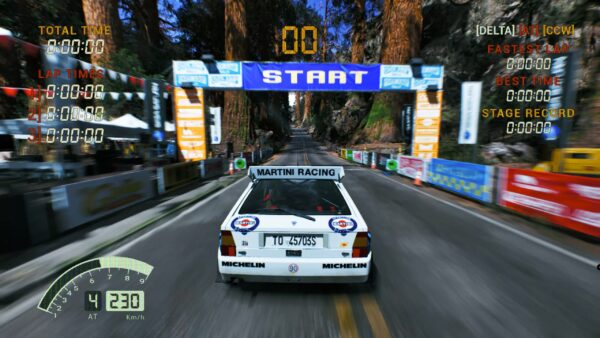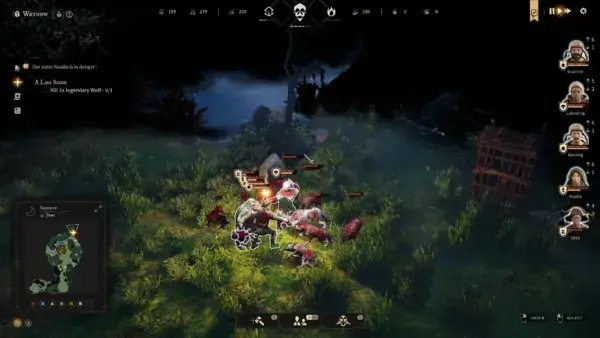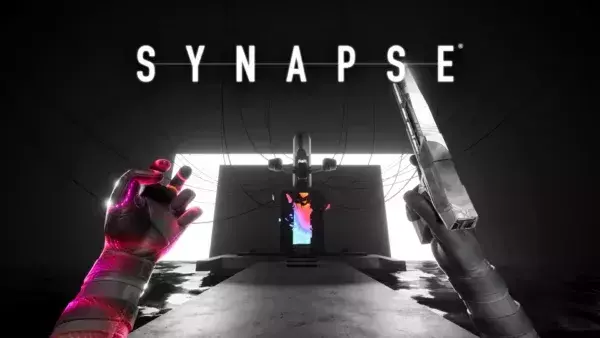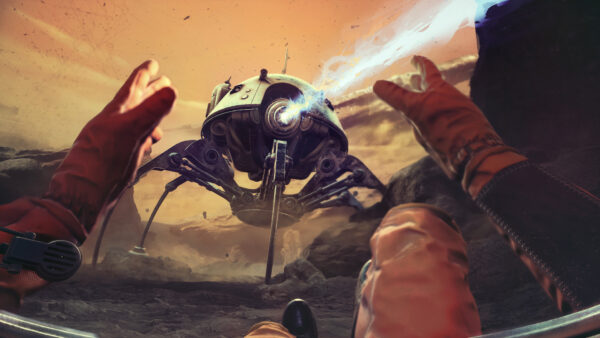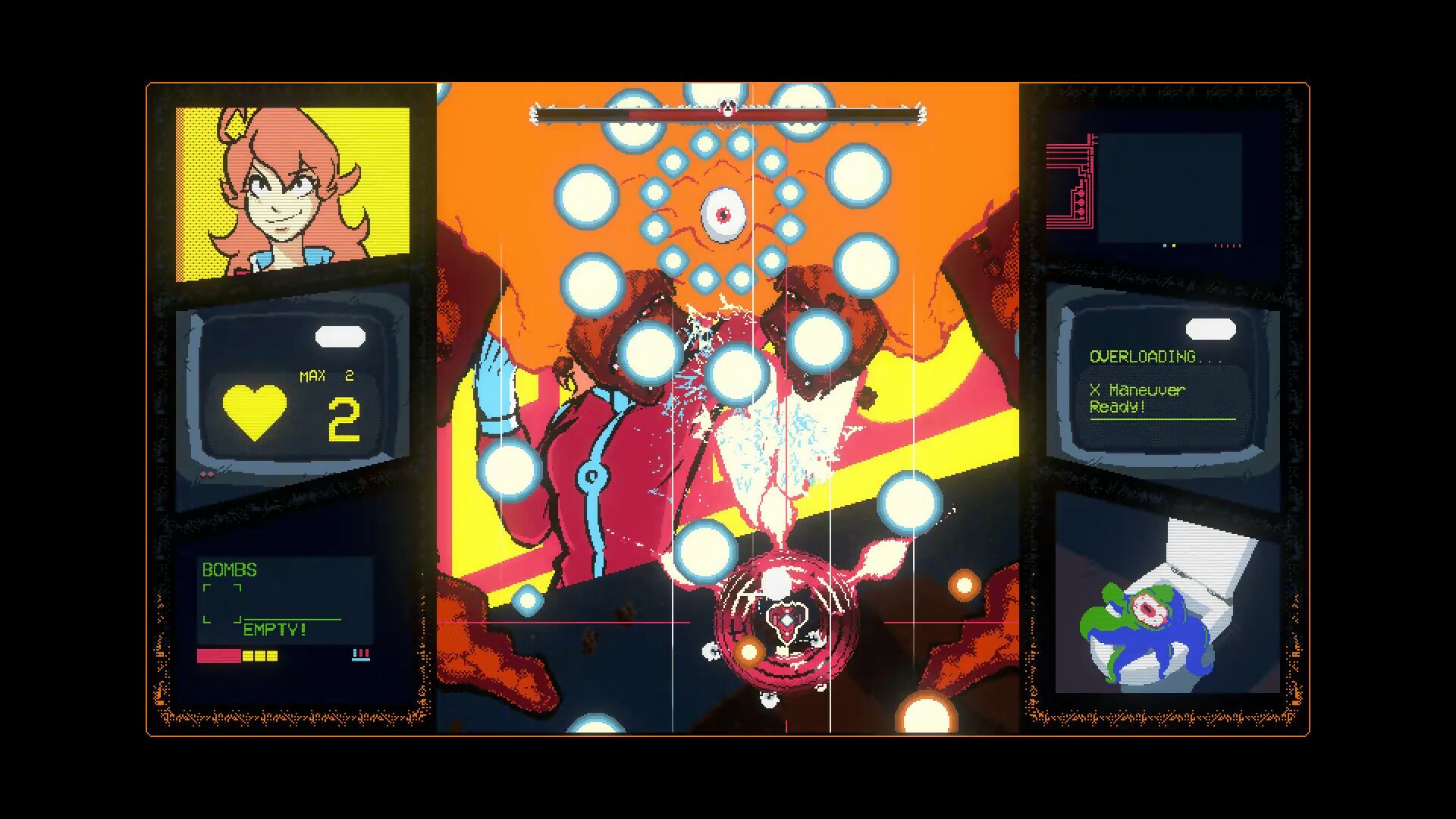
The shoot-‘em-up may be pretty much as old as the video game medium itself, but that doesn’t mean it hasn’t evolved and reinvented itself over the past four decades or so.
The fixed-screen shooters of the seventies evolved into the scrolling shooters of the eighties, which in turn morphed into the bullet hell sub-genre in the nineties and noughties.
Developed by Italy’s Matteo Gonano, Project Starship X offers its own subtle evolution on the genre: although its colourful barrages of enemy fire are straight out of a bullet hell title like DoDonPachi, it’s also inspired by Edmund McMillen’s indie darling The Binding of Isaac, both in its use of procedural generation to create new stages each time the game is restarted, and also its darkly comic visual style.
Then there’s what Gonano calls the ‘X Maneuver’ – a mechanic that renders the player’s ship invincible for a fraction of a second, and allows them to zip through deadly barriers or smash into waves of enemies. (It’s a little like the dash mechanic in FuturLab’s Velocity, but without the need to move an aiming reticule before you trigger it.)

Making a game by yourself: it’s brilliant!
For Gonano, the seed for Project Starship X was planted about a decade ago, when, inspired by his childhood affection for shoot-‘em-ups, he began creating one of his own in GameMaker.
“I made this one-level experience, with a blue spaceship, blue bullets, blue enemies, and (nineties pop song)Blue by Eiffel 65 playing in the background,” Gonano says. “The game was called Blue.”
Things got a bit more colourful in 2016 when Gonano made Project Starship, the forerunner to his current game, and his first commercial release; although flawed (“The graphics were terrible, and let’s not talk about the menu navigation,” Gonano confides), it still spurred him on to make a more polished, fully featured shooter. “I felt I could have done better,” says Gonano.
“Something more memorable.”
Aiming high
With a few released games under his belt, and having spent numerous hours studying tutorials on game design, coding, and pixel art, Gonano began work on Project Starship X in September 2018.
“With Project Starship X, I’m using Unity,” Gonano explains. “It’s the perfect fit for what I’m doing. The Animator component is amazing for moving enemies around the screen, and the Prefab System is the way to go when you have to create multiple patterns and ‘rooms’ for the procedural generation.”
Like many indie developers we’ve spoken to over the past few months, Gonano uses Aseprite for drawing and animating pixel graphics, and he recommends it for its speed and ease of use when creating sprites.
“It’s optimised for multi-layer sprites animations. Just set a few shortcuts on your keyboard, and your workflow will be faster than ever.”

Bullet heaven? Or…
Project Starship X’s graphics are a key part of its appeal: bold, colourful, and laced with a streak of warped humour (one recurring image on the user interface is of an octopus-like creature emerging from a toilet), they’re influenced by a broad range of artists, including Tank Girl and Gorillaz co-creator Jamie Hewlett, Alien designer HR Giger, and Dungeons & Dragons illustrator Wayne Reynolds.
“I dream of being able to draw like that,” Gonano says. “Maybe in 100 years from now.”
In terms of mechanics, Project Starship X draws on nineties games like R-Type Leo and the aforementioned DoDonPachi, as well as more modern genre entries like Monolith and Rym 9000 – Gonano says that the latter’s developer, Sonoshee, has provided him with a few tips to improve his work-in-progress, while Monolith also made use of procedural generation to create its random chambers of enemies and ruined architecture.
“Most of the shooters have repetitive patterns,” Gonano says, “but I find it boring after a while. Personally, I like a new fresh experience every time I start a match – I love roguelike games. The Binding of Isaac gave me the kickstart to work on the Project Starship games, even if it’s not strictly a shooter.”
Ahead of the curve
The main goal when designing a shoot-’em-up, Gonano adds, is to provide the right balance between challenge for experts and ease of entry for new players.
“A shooter needs to have a good difficulty curve,” Gonano explains. “Easy at the start, with the right amount of blasting to satisfy the newcomer, and then you can start increasing the challenge. You have to let the player feel powerful first.
“I think a lot of bullet-hell games fail at that, but maybe that’s just because they target people that want extreme challenges. What I want is to make a title that engages you and lets you feel good about your growing skill. The challenge must be fair: all the dangerous stuff should be well telegraphed.”

Bullet not-so heaven?
Gonano currently plans to release Project Starship X in 2020, so in the meantime, he’s busy working on the procedural systems and assets that will go into the finished game’s levels.
For anyone who really likes a stern challenge from their traditional shooters, meanwhile, Gonano has something rather unusual planned for the game’s ‘Ultra Hardcore Mode’: its cartoon pilots – which you can see on the HUD, Starfox style – will react to the bosses and waves of bullets coming at them.
In the easier game modes, these reactions are cosmetic; in Ultra Hardcore Mode, the pilots’ stress levels will increase as you take damage. If the pilots get too stressed, they will, Gonano reveals, suffer from a heart attack. “It’s unfair, it’s ultra-hardcore, and you’ll have to defibrillate the pilot if you want to come back.”
Difficulty levels, we’d argue, don’t get much harsher than that.


